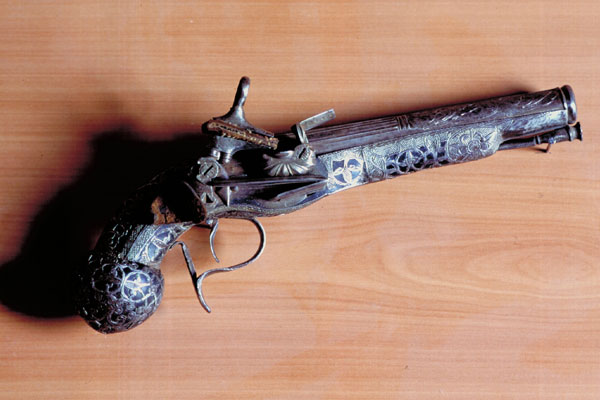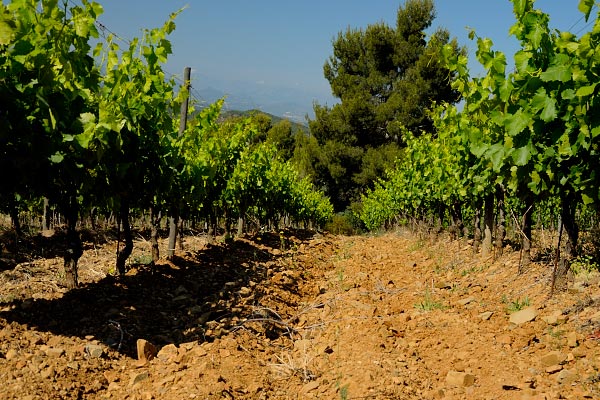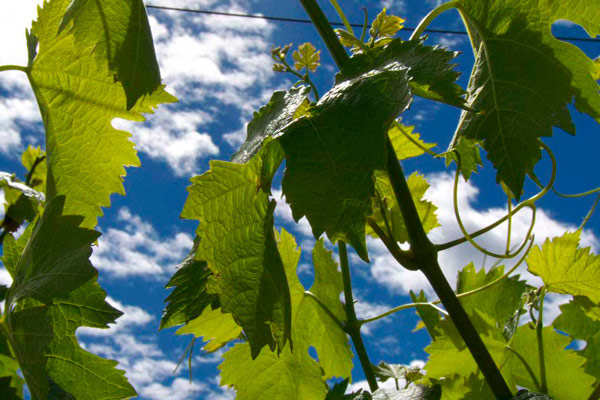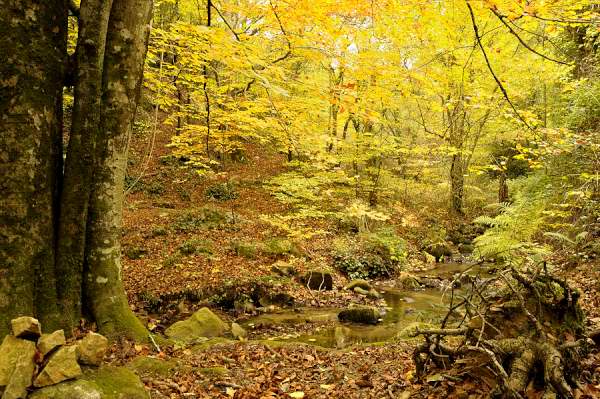
A Walkers Guide to Montseny Natural Park – Catalonia
A Walkers Guide to Montseny Natural Park
A nature reserve near Barcelona
The Montseny Natural Park is in the Catalan pre-coastal mountain range. It covers an area of 31,063.94 hectares and is 50km from Barcelona and 25km from the Mediterranean Sea.
The summits in this massif are the highest in the pre-coastal mountain range, and its name (Monte signo) comes from the fact that sailors used it as a landmark to return to Catalonia from their trips in the Mediterranean many centuries ago.
Where exactly is Montseny natural park?
The park is shaped in green.
The lines in different colours are the tracks of the hikes described in this article. If you click on them, you will see the description.
Montseny biosphere reserve
Montseny massif is one of the outstanding protected areas in Catalonia, so in 1978, UNESCO included it in the MAB (Man and Biosphere) World Network of Biosphere Reserves.
The contour of Montseny starts with elevations of fewer than 200 metres on the eastern side that rise to just over 1,700 m. The massif is divided into three large areas:
— La Calma
— Matagalls
— Turó de l’Home. You can see all the way to Mallorca island on clear days from the top.
Rising between the plains which surround it, the Montseny massif is a mountainous mass with a characteristic form, dominating and visible from many parts of Catalonia. It is known for the beauty of its scenery.
Its broken contours, sliced through by streams and cliffs, produces an extraordinary variety of habitats. It also means there are some remarkable examples of species unique to the area.
[Click on each image to see the photo in its original size]
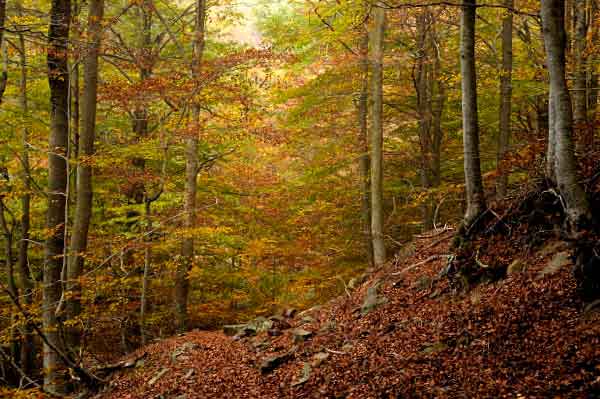
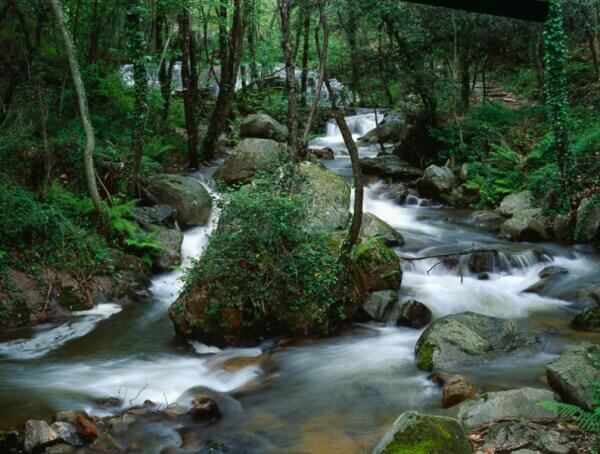
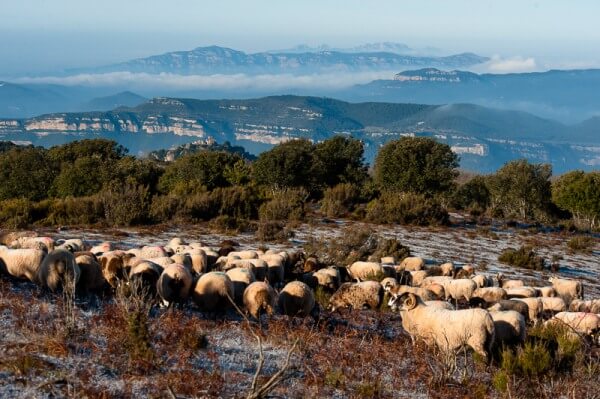
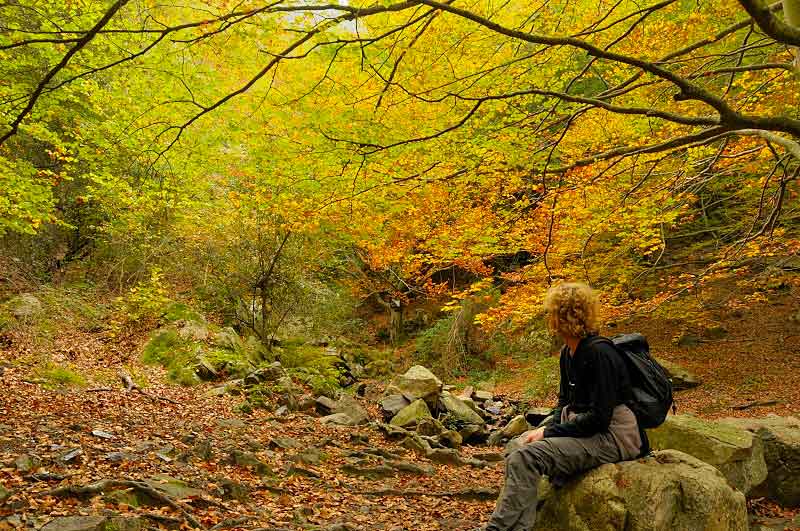
Montseny at a glance, from the sky
La Calma
La Calma (in English, the quietness) is a big plateau with good views of the two other pre-coastal natural parks (Sant Llorenç del Munt and Montserrat) and also the Pyrenees.
Sant Marçal pass (1106m)
Sant Marçal pass lies between the Matagalls and the Turó de l’Home areas. The granite platform of three bishops (taula dels tres bisbes in Catalan) is located in the pass; it is surrounded by three rocks. It is said that the bishops of Barcelona, Girona and Vic used to meet around this table so that none had to leave his own diocese.
Les Agudes (1703m)
The summit is an excellent viewpoint for the Pyrenees.
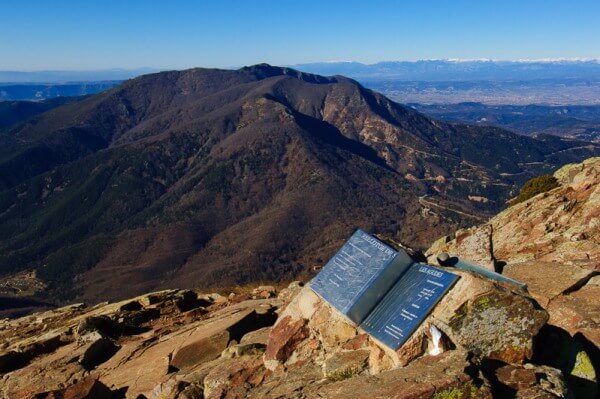
Matagalls peak (1693m)
The most beautiful mountain, because of its shape and its woods.
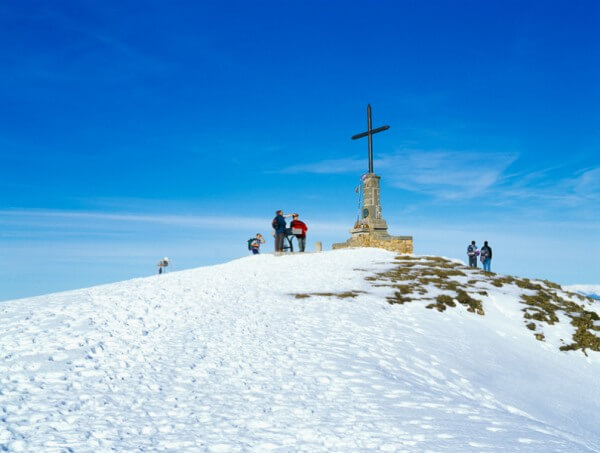
We have not included the Turó de l´Home (1,707 m), the massif´s highest peak, because it isn’t interesting. It has virtually the same views as Les Agudes, but Turó de l’Home has been ruined by many antennas installed on the summit, as well as a weather station and other stuff. You can reach the summit by car.
Montseny climate
The special configuration of the terrain, the altitude and gradients and the distance from the sea, at a typically Mediterranean latitude, form conditions for considerable climatic diversity.
As the altitude increases, the temperature and the humidity changes dramatically, from Mediterranean to Atlantic climate, with different intermediate stages and varying according to the aspect of the slopes.
— Mediterranean climate: dark green areas carpeted by holm and cork oaks.
— Atlantic climate: clearer green areas, which become yellow, red and ochre in autumn, full of beech trees, maples, white beams, among others.
In winter, sometimes snow covers the highest parts of the Montseny massif. Undoubtedly, the best season for a visit to Montseny is late autumn and early winter. November and December are the best months.
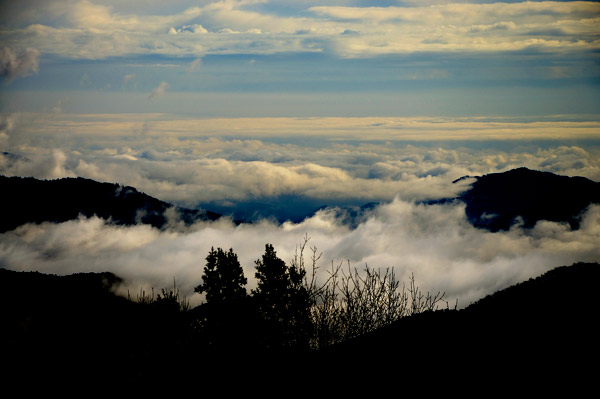
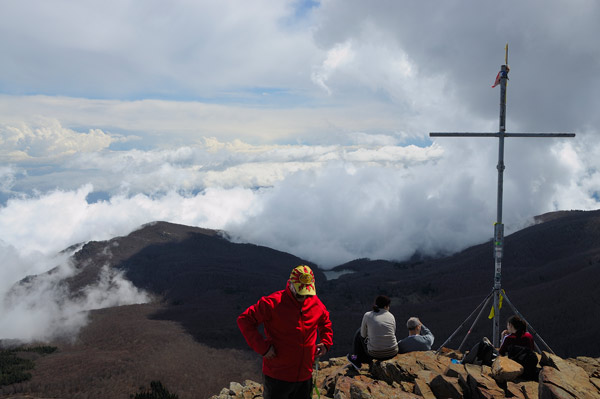
Inversion
This phenomenon occurs when the temperature increases with height. It is common in winter in Montseny.
Fog
In summer, at midday and in the afternoon, the wet air coming from the Mediterranean Sea condenses and creates a sort of mist that helps to keep the beech woods healthy and big.
Trees versus altitude
The differences in humidity and temperature explain the vegetation that thrives on Montseny, with several different zones according to altitude. The characteristic Mediterranean plant formations are found in the lower parts (holm oaks, cork oaks and pinewoods), rainy middle mountain types higher up (mountain holm oak and oak), and at over 1,000 m, there arebeech woods and groves of fir.
1700m
Beech, silver fir
1000-1200m
Oak, holm oak, chestnut
700-800m
Holm oak, pine and cork oak
150m
Riverside trees:
White willow
Hazel
Common alder
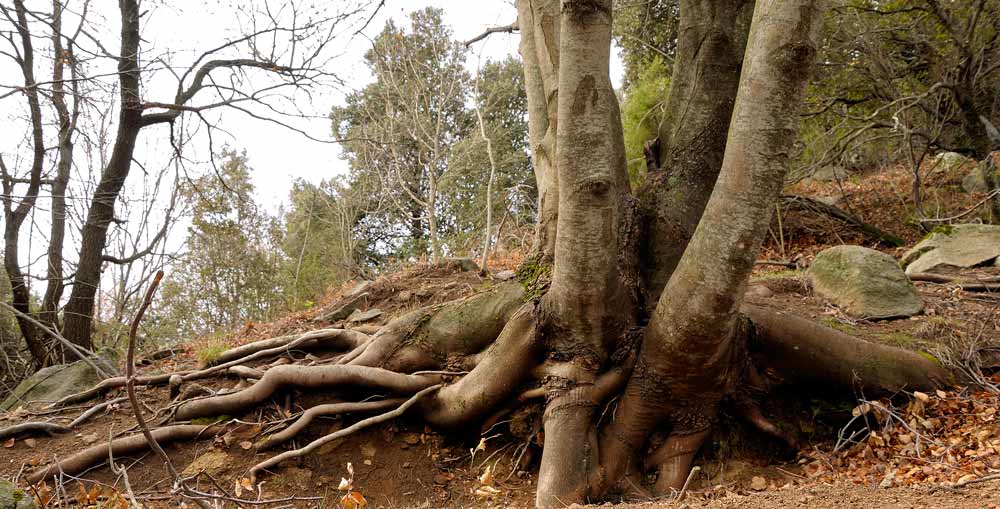
Geology
30% of the soil in the Montseny park is granite and other intrusive rocks; 65% is covered by schists and other metamorphic rocks, such as slate. These are the rocks that have traditionally been used to build houses in Montseny massif.
Montseny History
Some notable topics in Montseny history:
- Serra de l’Arca megaliths, built during the Neolithic period.
- Montgrós Iberian wall. In the Iberian period about 2400 years ago, the area surrounding the massif was occupied and stable settlements appeared on some hills, which saw the construction of fortifications, such as the walls on the hill of Montgròs, in the municipality of El Brull. This kind of building is called oppidum. Guided visits available on demand here (website only in Catalan).
- Montsoriu castle, at 634m, the country´s most important example of military architecture of the Gothic period from the tenth to fourteenth centuries. It is the only castle in Catalonia that has resisted all sieges. Recently restored. Stunning views, included the Mediterranean sea. Guided visits available. More information here.
- San Salvador de Breda monastery. Only the 32m-high tower and part of the cloister are Romanesque. The church is Gothic. The courtyard of the Abbey was built in the 15th Century. A Catalan television serial has been shot here, Ventdelplà. More information here.
[Click on each image to see the photo in its original size]
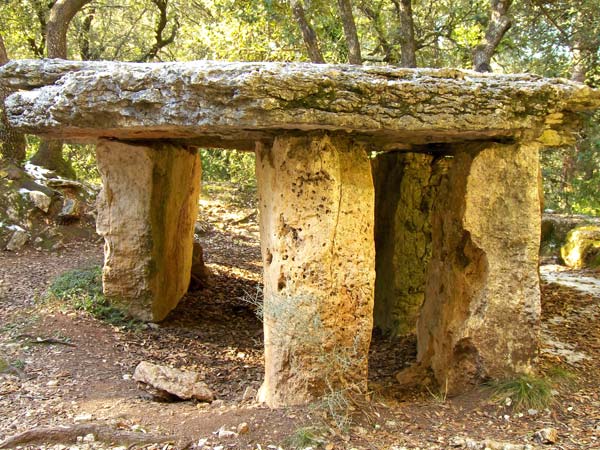
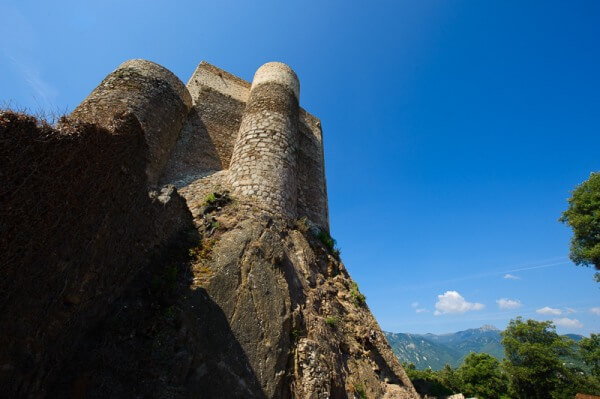
- Joan Sala I Ferrer, Serrallonga, a bandit, was born in 1594 in La Sala and killed in Barcelona in 1634. La Sala is a fortified farmhouse located near Viladrau, built in the 13th century and fortified in the 14th. You can now see the original wall and round tower. We visit La Sala in our Montseny tour. Learn more about Serrallonga here.
- 1860. Railway line arrives at Sant Celoni, a village close to the park.
- 1876. Man wipes out wolves from Montseny massif.
- 1978. UNESCO includes Montseny in the MAB World Network of Biosphere Reserves.
- 1987. Montseny is classified as a Natural Park by the Catalan Government.
Economy
The diverse terrain gives the Montseny park its great scenic and biological wealth of mountain ranges, streams, woods, croplands and high plains. The presence of man in the area from remote times has changed the landscape.
In the 1960s and 1970s the Montseny suffers from depopulation. The communication infrastructure was poor and people could not live on what a farm produced. But agro-tourism helped many people to keep their houses.
Montseny inhabitants have made their living from:
- Farming. Nowadays, farming is constrained to the valleys; farms at higher altitude have been either abandoned or changed into rural tourism buildings.
A farm I recommend visiting is Bio Farm Salgot. They will show you how they grow pork in a sustainable and healthy way for both the animals and the environment. More information here
- Wood.
- Wild fruits, such as chestnut, dog rose, common elder and strawberry tree. The Centre de Manipulació I Producció de la Castanya in Viladrau is worth a visit if you are curious about chestnuts.
- Herbal remedies, such as thyme, rosemary and French lavender.
- Mushrooms.
- Livestock, mainly sheep, although they have now been replaced by cows.
- Bottled mineral water. Montseny massif has about 600 springs. Now, six bottled water factories take the water from springs nearby the Montseny massif, and two are in the park. There is ongoing controversy about whether the factories take too much water and whether this is damaging the ecosystem.
[Click on each image to see the photo in its original size]
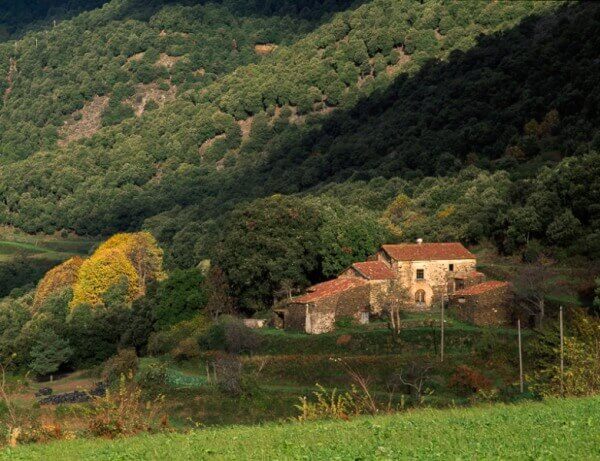
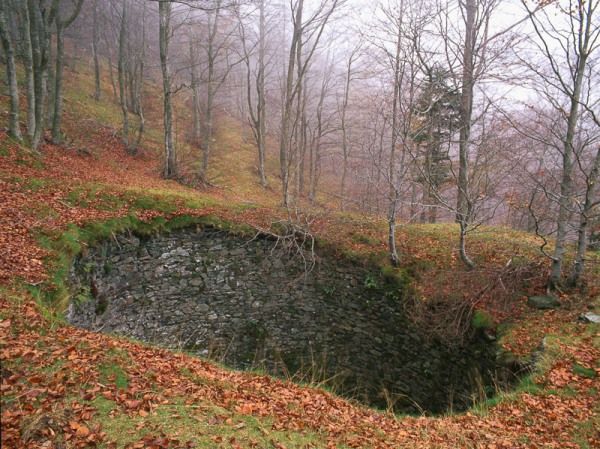
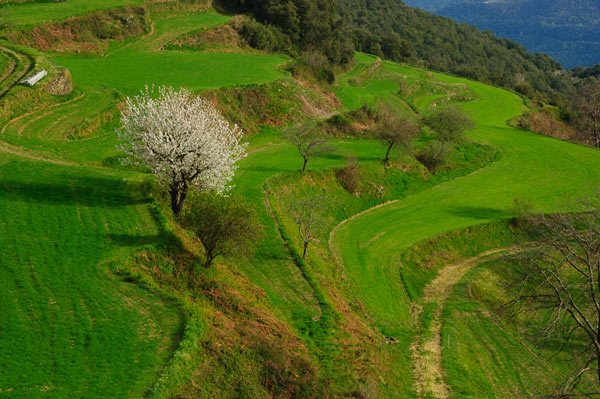
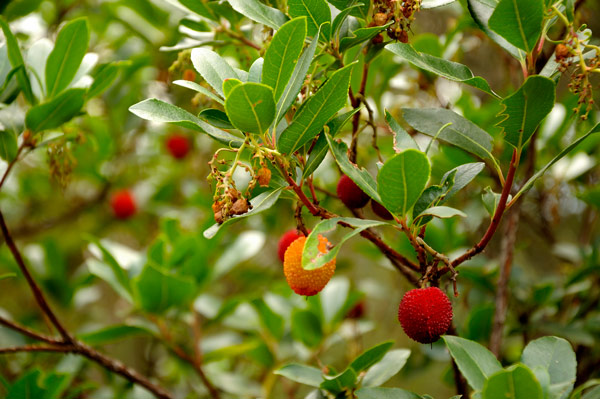
- Pottery. Most of the makers are settled in Breda.
- Tourism, since 1912, when the first hotel was built, in Santa Fe.
- Charcoal. A slow, oxygen-free two-week combustion of wood is necessary to make charcoal. The most valuable wood has always been the holm oak. The production of charcoal became extinct in the late 1960s.
- Cork. A lot of patience is needed to make cork. The cork oaks are peeled every 10-15 years. The tree forms cork to protect itself against droughts and fires.
- Hunting. Mainly wild boars.
- Ice wells. In winter, the ice in basins located in shaded and high areas of the massif was cut and stored in roofed ice wells, covered with leaves, tiny branches and straw. In spring and summer, the ice was transported to Barcelona and other cities.
- Snow wells. Same as ice wells, but the well was not roofed. After the snow in the wells turned to ice, it was covered with straw, leaves and branches. In the Montseny 77 ice and snow wells have been listed.
Nowadays the decline in agricultural, forestry and stockbreeding has changed family economies. Services such as rural tourism, restaurants and catering supplement incomes.
Montseny Fauna
El Montseny is a place of refuge for a number of species typical of higher-latitude (Central European) environments. The massif is the southern limit of their area of distribution in Catalonia.
The woodland character of El Montseny determines to a large extent the fauna that live there. Among the holm oaks, the best-known mammals are the wild boar, the fox, the genet and the dormouse.
Among the most common birds are the goshawk, jay, and robin, and there are various species of amphibians, reptiles and fish.
The park´s most remarkable species is the Montseny brook newt, which was discovered only a few years ago and is the massif´s only native vertebrate. It needs highly oxygenated water so it lives above 600m in cold water streams and gorges. Park staff estimate there are between 1000 and 1500 specimens. The high demand for water from factories is a risk for this species.
The other endangered species is the ‘Granota Roja’ (Rana Temporaria), in English red frog, an amphibian which is very active in winter and moves easily on the snow. The frogs live next to Santa Fe reservoir. Unfortunately, 90% of their eggs don’t produce young.
The salamander is the other distinctive amphibian in Montseny. Salamanders breathe through the skin and can cope better with cold winters than with hot summers.
Montseny walks and trails
[Click on each image to see the photo in its original size]
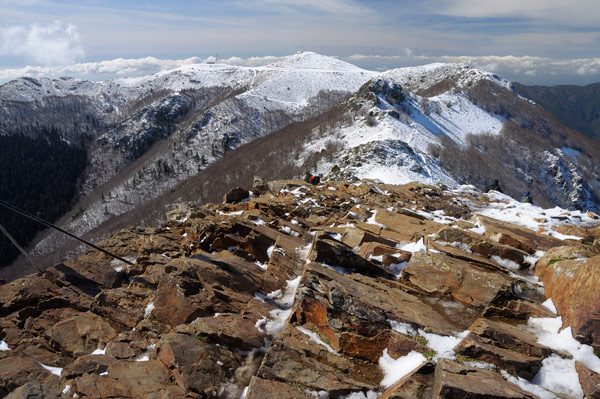
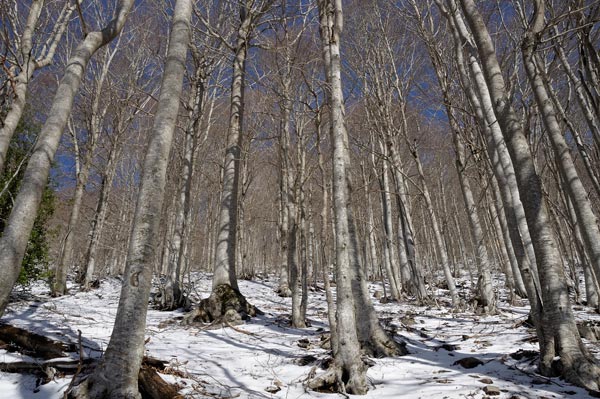
Easy walks
E1 – Sot de l’Infern
Sot de l’Infern means ‘hell nook’, a small hidden place in the deepest part of a wood.
Distance: 3.5km – Duration: About 1 hour. The walk is a loop which starts and ends at Plana del Coll (936m), a point in the route near Fontmartina campsite.
What makes this walk worthwhile is
→ You see different kind of woods in just 90 minutes: holm oak groves, oak groves and chestnuts; three huge chestnuts are particularly noticeable.
→ The main trunk of the chestnut trees used to be cut so they developed thin branches instead of a big treetop, and these branches were used to make barrels.
→ You can also see a riverbank wood, composed of common alders and common ashes, in a spot which remains wet even in the hottest days in summer.
→ A shelter where charcoal makers stayed overnight when they had to watch over a pile of wood.
Not far from the area there’s Montseny, a very small village where the film Penny Princess was shot. It was directed by English film director Val Guest, and starred Dirk Bogarde. Some souvenirs of the film are still on the walls of Fonda del Montseny bar.
E2 – Fontmartina forest path
This is also a loop which starts and ends in Plana del Coll (936m). Distance: 4.8km – Duration: About 1h 30 minutes – Elevation gain: 200m
In the 1960s Joaquim Martín, a forest engineer, set up the Montensy Silvetum, a kind of woodland which aimed to show the species of trees that grow in three different European areas: Mediterranean countries, central Europe and northern Europe.
During the walk you can see Himalayan cedars, Douglas firs, Larix and cedars from the Atlas Mountains in Morocco. Afterwards, you see again the native trees: holm oaks and chestnuts.
Near the Hortes spring you find a riverbank grove: common alders, trembling poplars, silver poplars, wild cherries and walnut trees.
Small flat treeless areas in the holm oak groves are where charcoal makers built the piles of wood they used. Finally, you also cross Scots pine groves. So, a great variety of climates in a short walk!
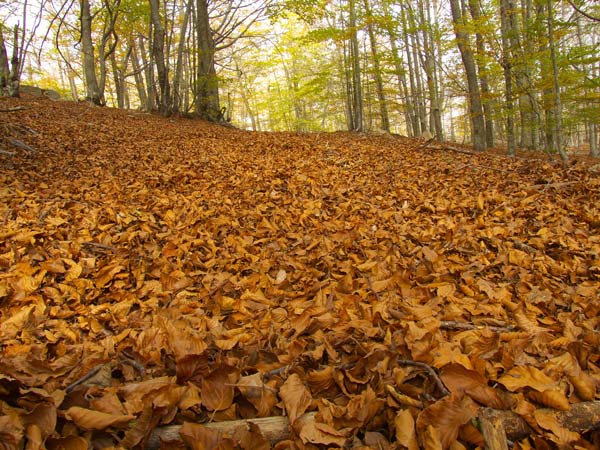
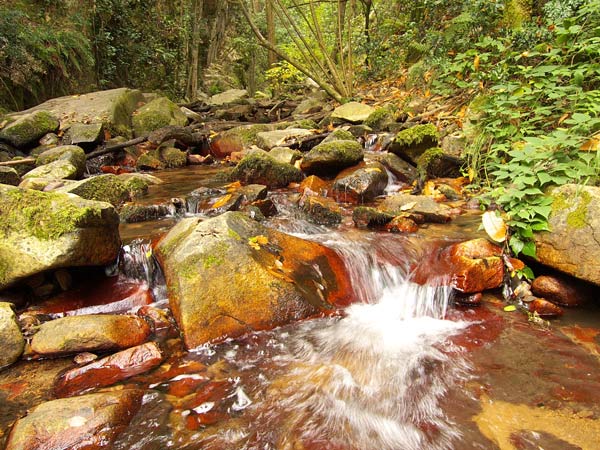
E3 – Nine-branch chestnut path
This loop walk runs along the north side of the Montseny massif. Viladrau is the starting and end point of the hike. Distance: 5.8km – Duration: About 1h 45 minutes – Elevation gain: 180m
Viladrau is well-known for its modernist houses and because some outstanding 19th century thought leaders lived there, such as the poets Jaume Bofill (1878-1933), alias Guerau de Liost, and Josep Carner (1884-1970).
Bofill Hostel is worth a visit. It was planned by Ramon Bofill, the first dentist in Spain, and inaugurated in 1898. Don’t miss it! It will help you turn back in time. If you don’t want to stay overnight, you can stop here for lunch.
Montseny Natural Park has 60 trees that are particularly striking because of their size, rarity or age. Among them are oaks, holm oaks, black poplars, Himalayan cedars, beech trees, and common yews.
Thirteen of them are in Vildrau; others are in the villages of Arbucies and Fogars de Montclús. During this hike you have the opportunity to see one of them, the nine-branch chestnut, located at 850m near La Vila farm. Needless to say it is a huge and very ancient tree, at least a thousand years old. It is 23 meters high and its trunk, which is almost hollow, has a diameter of 6.5 meters.
Two of its original 9 branches have disappeared and two others have died, although remain attached to the trunk. The area round the tree was cleared some time ago, so the chestnut lost its protection against storms and strong winds.
Some birds and reptiles use the space inside its trunk. Rats, squirrels, wild boars and mice, eat its chestnuts.
This tree inspired Xavier López i Vázquez to write the book En Drau. Com el Castanyer va arribar a Catalunya (in English: The Drau. How the chestnut tree arrived in Catalonia), a story for children which tells about the origin of the name Viladrau and how the Romans brought the chestnut to Catalonia.
E4 – El Roc Perer (1332m)
El Roc Perer is the name of a crag located on the south-east slope of the Turó de l’Home mountain. This is a circular walk of 4.6km and 214m elevation gain. It will take you about 2 hours.
It starts and ends at Santa Fe, and is the less crowded path in this part of the Montseny. The path crosses some of the best silver fir and beech forests in the park. Although some of the tracks are wide enough for a 4WD car, they are closed off for vehicles, so quietness is guaranteed.
Suitable hike for forest lovers.
[Click on each image to see the photo in its original size]
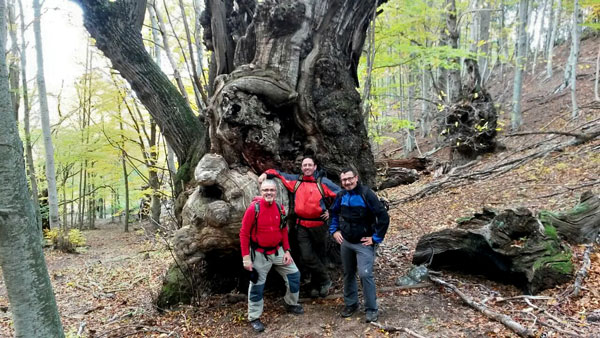
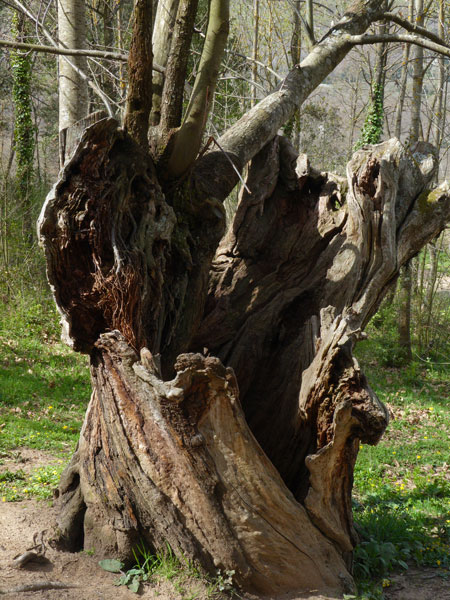
M1 – Montsoriu castle (634m)
The Montsoriu castle can be reached from Arbucies, a village in the north-west, or from Breda, another village located in the south-east side of the castle. We have decided to start in Arbucies and end in Breda, being the castle in the middle of the route.
That makes a walk of 13km, 4.5 hours and 432m of elevation gain.
During the ascent from Arbucies you cross stunning chestnut tree groves. The path is signposted as PR C-201, though some of the crossings have lost their marks.
The views from the castle are wide, and you can even see the sea. It’s worth visiting. Guided visits can be booked from this website.
After the visit, the landscape changes dramatically. You cross Mediterranean woods in a continuous descend until Breda.
You need to think about a transfer to return to Arbuicies if you left your car there.
Some advice: if you have enough time, visit some of the many pottery shops in Breda.
M2 – Morou mountain and Riells stream
I fell in love with this part of the Montseny park five years ago when I decided to do a walk I found in an old walking book. Many books talk about the reddish-rock Riells stream, but hardly any say a word about the superb beech woods located in the north-west side of the mountain.
There’s no sign-posted path but it is worthwhile to spend a day here to escape from everything. What makes these woods so outstanding is that the soil is very thin and the beeches grow nearly on the rocks. The mix of ground and rocks creates a special landscape, quite different from the beech groves located in other parts of the park.
This is a circular route start and ending in Riells that takes you about 6 hours. The elevation gain is 778m and the distance 10.7km. I would say it is moderate-challenging.
M3 – Turó de Morou (1308m)
Easier than the previous one, this circular walk starts and ends in Santa Fe. The elevation gain is 320m and the distance about 7km. There are two sign-posted paths: one reaches the summit of Turó de Morou and the other one doesn’t. I recommend the first, for better views and the opportunity to visit an ice well named Els Plans.
The other highlights of this route are:
⇒ A chestnut grove at the beginning of the route.
⇒ Empedrat de Morou. This is the name of a granite area where you can appreciate the different steps that occur as soil is formed: the source rock, the source rock fragmented in multiple-size blocks and, finally, the sauló, a kind of sand made of ancient granite. This area also stands out as a view point to see Santa Fe valley, Turó de l’Home, Les Agudes and the Mediterranean sea.
Santa Fe reservoir, built between 1920 and 1935 to produce electricity for the hotel of the same name. It has been tucked into the landscape so neatly you can’t tell whether it is a natural or man-made lake.
[Click on each image to see the photo in its original size]
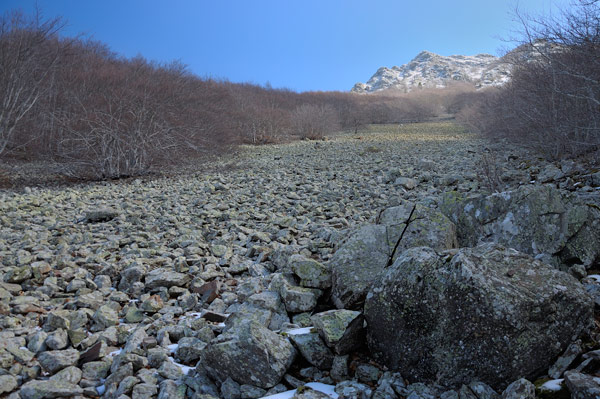
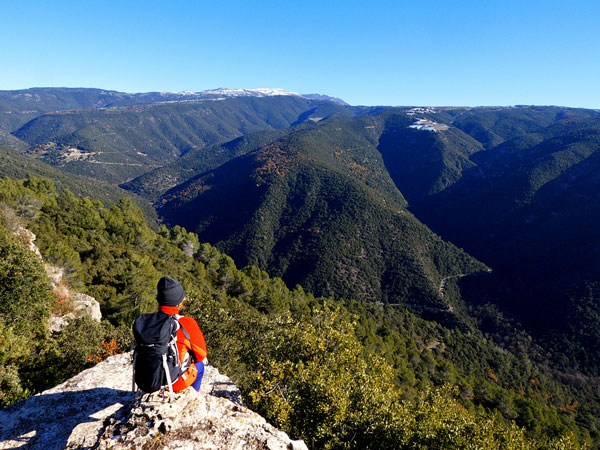
M4 – North-east of Montseny park
9km and 872m of elevation gain.
This route starts in Arbucies and ends in Santa Fe. You can call a taxi to return.
If you decide to walk back to Arbucies, either on the same path or a different one, I would class this walk as challenging.
This walk permits you to appreciate how the farms have been built into the rough landscapes of this part of the park. You will have to cross many 4WD tracks, but you only follow them for a few meters.
The path used to be signposted as PR C-204, but lately some parts need repainting.
Some singular trees you can visit during this hike:
• Freedom tree. It is a platanus hybrida located in the main square of Arbucies, planted in honour of the 1st Catalan Republic, in 1641.
• Himalayan cedar, situated in the Roquer Dendrological Garden, next to a house called El Roquer. Also in the same garden, you can see a huge magnolia. The owner of this garden is called Emili Garolera.
• At 813m, on the way to Santa Fe, there is the huge chestnut called Castanyer Gros dels Roters — Roters’ Huge Chestnut. Roters is the name of a ruined farm nearby. The trunk of the tree has a large diameter althoug his branches are very thin. Some experts say this tree may be 800-900 years old. Unfortunately it is affected by two illnesses.
A good restaurant in Arbucies is La Trona. No website. To book call +34 972 86 03 63
Santiago Rusiñol, a popular Catalan painter, was based in Arbucies in the early 20th Century.
M5 – Matagalls (1696m) south side
10.5 km – 708m of elevation gain. It will take you about 4 hours, breaks not included, to complete this circular walk.
Matagalls is my favourite summit in the Montseny park. Stunning views of the Pyrenees and other mountains of Catalonia are the reward for your effort.
Hardly anybody uses the south side to climb Matagalls because it has more steps than the east and west paths, the more commonly used ways to get there. However, the woods and spots we find are remarkable. This is one of my favourite hikes, along with the M2.
Not an easy path to follow; some cairns help, and sometimes there are some marks on the trees. If you can’t do it alone, find a a guide to lead you.
Pregon pass is an idyllic milestone, a sort of meadow located between two hills.
M6 – Saní cliffs
I’d class this hike as moderate-challenging. During this circular walk you visit the west part of the Montseny park, which is mainly composed of Mediterranean woods.
16 km – 510m of elevation gain. It will take you about 5 hours, breaks not included, to complete this circular walk which starts and ends in Aiguafreda.
I chose this route because:
• You can see the most important megalithic structures in the park.
• Most of the walk is on the ridge of the mountain, near the cliff. You have beautiful scenery: Pla de la Calma on the right, Matagalls in front of you.
• Although the area is full of tracks wide enough for a 4WD car, you walk on narrow paths most of the time.
• You pass by the house of your dreams, Can Serra de l’Arca, situated in a place with stunning views to the south and east.
• You can reach Aiguafreda by train from Barcelona.
Near the starting point of the hike there are two ice wells, next to a picnic area called Avençó. If you cannot read Catalan it is not worth visiting them.
[Click on each image to see the photo in its original size]
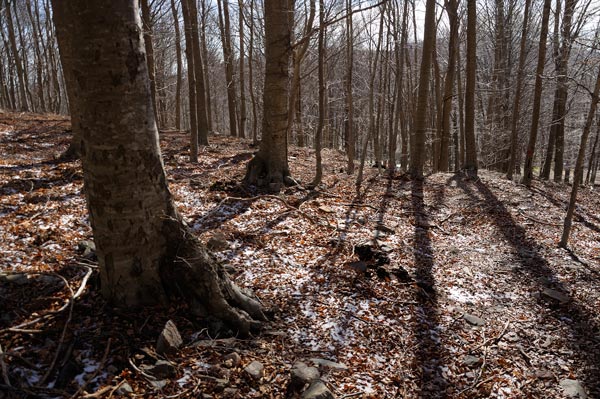
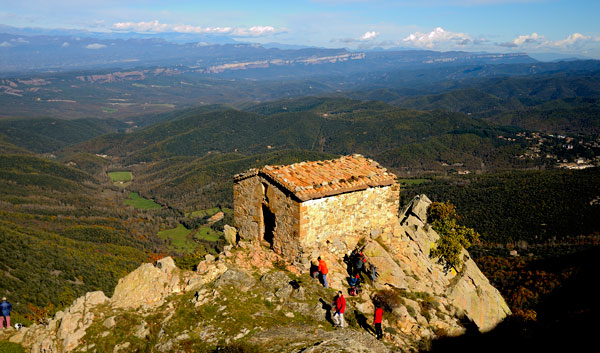
Challenging walks
C1 – Gualba stream
Elevation gain: 950m – Distance: 23km
Opportunity to explore de the south-east of the park following a stream full of beautiful gorges; the most popular is el Gorge Negre because of the many legends that are associated with it.
You start and finish at Gualba, but the walk is partially circular because we walk twice a part of the trail.
You pass through Santa Fe where you can find accommodation, an information point for the park and more facilities.
Above Gualba waterfall, at 538m, there is a singular tree called Suro de la Pedra. It is a huge cork oak located near the Can Prat farm, in a place with excellent views. It was partly damaged by the fires in 1994 and now one of its main branches is dead. The Suro de la Pedra is 17m high and the diameter of its trunk is 3 meters.
C2 – Young pine trail
Elevation gain: 1300m – Distance: 23km.
About 6.5-7 hours, breaks not included.
This walk starts at Sant Pere de Vilamajor, at 300m, and ends in Formic pass, at 1144m.
We chose it because you walk for a long time along one of the most scenic crest lines of the Montseny park, which joins several peaks: Turó del Salmon, Turó del Pinovell, Turó del Cuc, El Sui and Roca Roja.
If you walk off the main path for five minutes, you are able to visit two singular classed trees: The two holm oaks of Cal Sorell, a traditional, still alive farm. Located at 670m, the biggest holm oak was damaged by a lightning and shows many branches dead. Fortunately, the other one looks healthy.
This crest lines ends in La Calma plateau, at 1271m. From this point to the end of the walk the terrain is easy and flat. Just enjoy the views of Montserrat crags, the Pyrenees, Bertí cliffs, Vic valley, Matagalls, Agudes and Turó de l’Home peaks, and many more mountains in Catalonia. La Calma has also distinctive farms, such as Bellver, l’Agustí, El Bellit and La Figuera.
El Bellver is a restaurant as well as an excellent view point. To find out more visit this page (unfortunately only in Catalan).
You should plan to call a taxi to pick you up at Coll Formic to exit the park.
[Click on each image to see the photo in its original size]
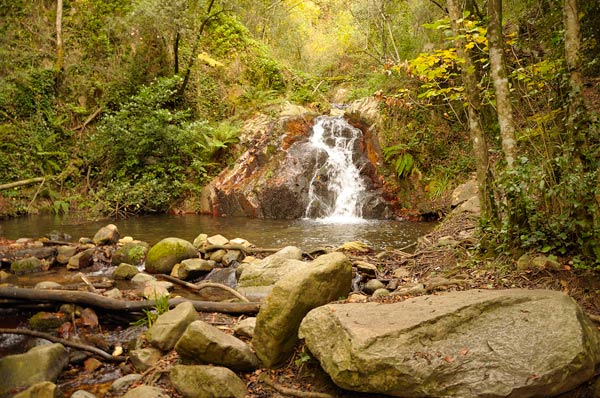
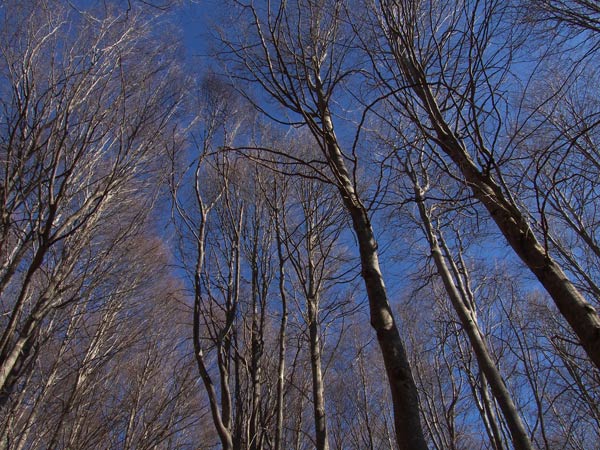
C3 – Les Agudes northern crest line
This walk follows the ridge called Els Castellets; it starts in a parking area called Pla d’en Mon and ends at the summit of Les Agudes.
You should be used to scrambling if you want to do this walk. Most of the difficulties you find on the crest line can be bypassed by following the path which goes along the west side of the ridge.
Sometimes the rock is unstable so you should pay attention. If children or inexperienced people are in the group, a rope is advisable.
To descend, follow the path marked with red spots.
From the summit, views of the Pyrenees included the Canigou. Just take a look at the pictures below.
The Montseny tour
We have created a 5-day tour in the Montseny park so you will be able to see the best of the massif in just one trip. More information here.
Montseny from Barcelona
The villages which make a good base to explore the Montseny natural park are: Viladrau, Arbucies, Breda, Sant Celoni, Aiguafreda and Seva. Viladrau and Arbuices are the most attractive; we recommend them.
You can reach Sant Celoni and Aiguafreda by train from Barcelona. For Aiguafreda take R3 line and for Sant Celoni line R11.
For Seva take the R3 line to Sant Miquel de Balenyà station. Then take a Sagalés bus, line 441, from this village to Seva. More information about Sagalés buses here.
For Breda take a train to Riells i Vilabrea-Breda station. From there it is a 3-km taxi drive.
For Viladrau take a train to Sant Miquel de Balenyà station. In Sant Miquel, take the 441 Sagalés bus line to Viladrau. More information about Sagalés buses here.
To reach Arbucies you have to take a train to Hostalrich station, and then a bus to Arbucies. More information about the bus here.
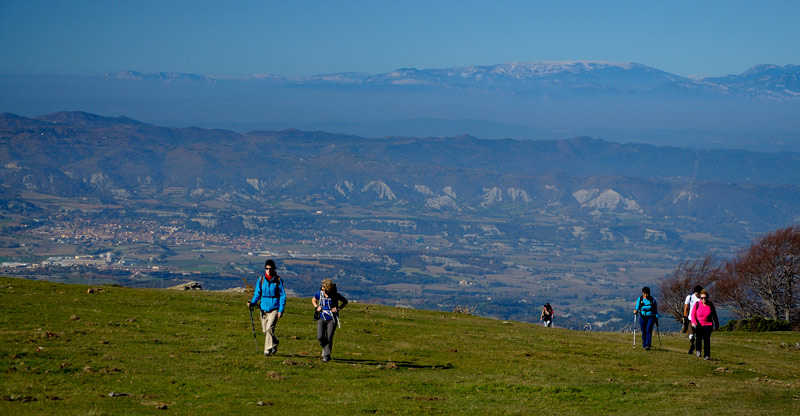
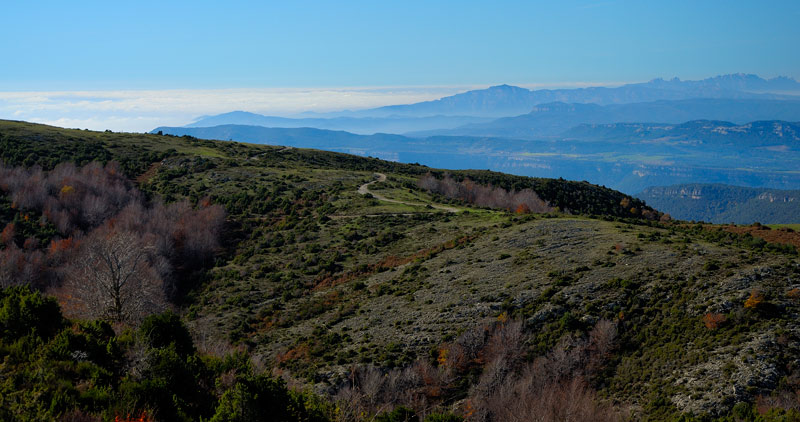
Please comment below on A Walkers Guide to Montseny Natural Park.
If you wish to travel to this region and see the most beautiful forests in Catalonia – contact me here for any questions you might have.


